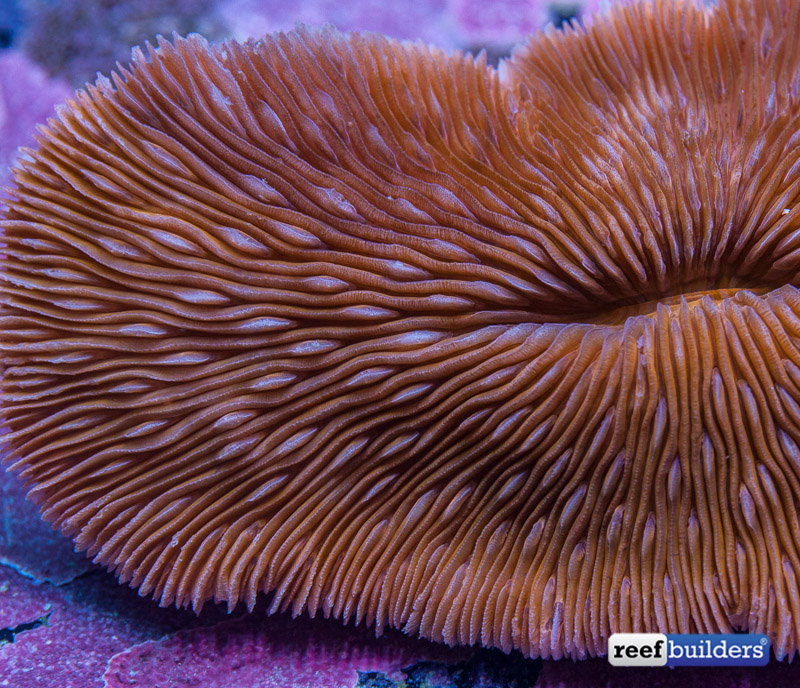Orange is one of the most highly sought-after coral colors for the aquarium hobby, we collectively freak out when any type of coral is discovered in orange garb. We’ve featured so many different orange coral ‘firsts’ over the years, including orange tongue corals, orange hammer corals, orange frogspawn corals, orange Fungia and even the orange Cantharellus has taken a turn on our front page.
But about a month ago while coral-scouting at Quality Marine we came across an orange coral colony which is not a Cycloseris, not a Fungia, not a Tongue coral, but instead is a Lobactis scutaria. Scutaria ‘Fungia’ corals are highly recognizable species which recently were split off from the broad Fungia genus to be part of their very own Lobactis group.

In contrast to all other true ‘Fungia’ corals, the newly minted Lobactis scutaria is distinctive in being less than radially symmetrical, with regularly spaced lobes around the mouth at the base of each tentacle. These ‘tentacular lobes’ are somewhat visible on other members of Fungia, but Lobactis scutaria really does them justice, often with brightly colored green tentacles over these lobes to further highlight them.
The color pattern of Lobactis scutaria is also pretty standard issue, with most specimens being a shade of purple with bright green tentacles to contrast. So you can imagine our surprise when we spotted an ‘orange tongue coral’ from a distance that totally did not fit the mental search image we have developed for this coral.

Upon further examination, it was clear that this was no tongue coral, but instead an exceedingly rare, single specimen of orange Lobactis scutaria. The idea of ‘rare coral’ is so tired, especially when it is used to hype the latest and greatest limited edition coral that everyone suddenly has for sale.
But if you want to discuss actual rarity, this orange Lobactis scutaria is the first specimen we’ve ever seen, either in pictures or in real life. If someone who’s coral ID skills we trusted told us they had seen an orange Lobactis we would have downplayed their observation to being a Ctenactis or odd-looking Herpolitha. Heck, we didn’t even trust our own eyes until we took these really up close photographs of the coral to confirm that what we were seeing is indeed the big roudned lobes characteristic of this species.
At the time that we photographed this sweet orange Lobactis the coral was still pretty freshly imported by Quality Marine from the South Pacific, either Fiji or Tonga, so the super vibrant aquarium coloration of an orange disc coral had not yet fully developed. Given enough time we expect that this coral could develop a neon orange base color with a pretty sweet coloration to the tentacles too. As long as we’ve been reefing, we are still surprised to come across really wild curveballs like an orange Lobactis but every new discovery inspires to continue to keep our eyes peeled for the truly ‘Unseen Corals’.









